Hoffa’s missing body leads list of top 5 Mob mysteries
Unsolved murders and a missing fortune keep cold-case investigators, historians busy tracking clues
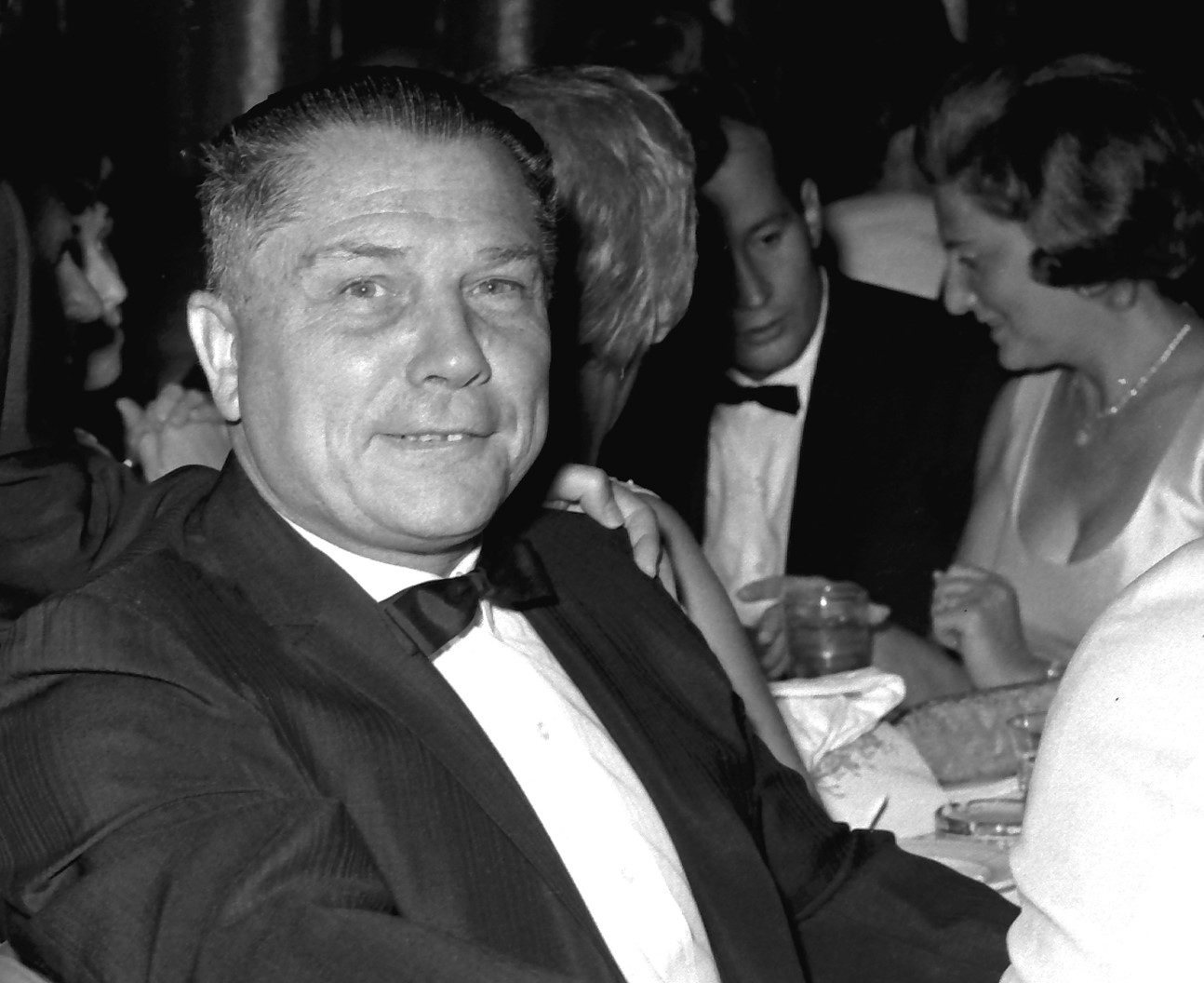
Organized crime, by its nature, is a secretive activity, with the threat of violence often reserved for those who might reveal damning details of its inner workings. Better to keep quiet to prevent the whole enterprise from collapsing into turf wars, bad publicity, insolvency, indictments and prison.
And so, Mob mysteries proliferate. Many of them are about the identities of who ordered and who perpetrated Mob hits. Even one of the most prolific of Mob songbirds, hitman Abe Reles of Murder Inc., was ill equipped to reveal to authorities those responsible for hundreds of New York area murders in the 1930s.
Here is our list of the top five most enduring mysteries in the history of the American Mob. Lacking in solutions, we try to make up for it with informed speculation, which is about all we have in many cases.
Where is Jimmy Hoffa’s body?
The most famous Mob mystery has to be the whereabouts of the corpse of former Teamsters Union president James “Jimmy” Hoffa, who disappeared in 1975, certainly the victim of a gangland hit. Ironically, the solution to this mystery may come soon. Or perhaps not. The FBI has searched and excavated potential Hoffa burial sites multiple times based on leads, and it has come up short each time.
The pursuit of Hoffa’s burial site gained renewed traction recently with the release of the 2019 movie The Irishman, which mixed fact, fiction and speculation about Hoffa. The film bases its take on a controversial book by one-time Hoffa bodyguard Frank Sheeran, who claimed New Jersey-based Genovese crime figure Anthony “Tony Pro” Provenzano commissioned him to kill Hoffa. Sheeran professed to being in the car that picked up Hoffa outside a restaurant near Detroit, taking Hoffa to an empty house, shooting him dead, and having a couple of Mob goons cremate the body.
The 62-year-old Hoffa, known for his longtime Mob ties, wanted to run again for union president and, in 1975, sought the approval of Tony Pro and Detroit boss Anthony “Tony Jack” Giacalone, involved in racketeering with the Teamsters. However, they were satisfied with the corruption offered by Hoffa’s replacement, Frank Fitzsimmons, and did not want him back. The Detroit and New Jersey underworld feared Hoffa might spill about their illicit diversions of Teamster pension funds.
On July 30, 1975, Hoffa expected to meet with Tony Pro and Giacalone for lunch at a suburban Detroit restaurant, the Machus Red Fox. The mobsters never showed. Witnesses last saw Hoffa in the parking lot, getting into the passenger seat of a car later confirmed owned by Giacalone’s son, Joseph, and allegedly driven by Hoffa’s foster son, Charles “Chuckie” O’Brien.
Sheeran’s story is one of many making the rounds over the decades about Hoffa’s departure. Another popped up just this past May. Reginald Haupt Jr., a former Mob defense lawyer, said one of his gangster clients, the late Chicago Outfit fellow Lou Rosanova, told him he arranged for a private plane to fly Hoffa’s body from Michigan to Georgia in 1975 to inter it beneath a green at the Savannah Inn and Golf Country Club on Wilmington Island. Hoodlums and their Teamsters cronies liked to vacation there, and when they reached the green, they would urinate over Hoffa’s alleged grave, according to Haupt.
No bulletins on that one yet. The old tale of Hoffa’s remains at New York Giants stadium in New Jersey was debunked after the stadium’s demolition in 2010. Investigators have dug into at least nine locations in and around Detroit without success. Wilder stories included his body placed under a poker club in Gardena, California, dumped in the Florida everglades, and inserted into a junked car sold for scrap in Japan.
A scenario promoted lately by renowned Hoffa expert Dan Moldea holds the most promise: Tony Pro had Hoffa’s body shipped in a metal barrel from Michigan to a landfill site in New Jersey. Why drive it so far away, 620 miles? Maybe Provenzano, on the outs with Hoffa, considered the body a “trophy” to have in his home state. Moldea’s opinion is that Tony Pro considered the cadaver a bargaining chip to trade with the feds for leniency if he was indicted.
Moldea obtained a sworn affidavit from Frank Cappola, son of Jersey City refuse dump partner Paul Cappola. Frank Cappola told Moldea that his father had described how Hoffa’s body arrived in a drum by truck from Michigan in 1975 and was stuffed into another barrel. Paul then buried the Hoffa container with other barrels of industrial waste, inserted a marker and covered up the hole. Another source, Phil Moscato, Paul’s partner in the dump, also told Moldea that Hoffa’s remains were there.
Frank Cappola (who died in 2020) showed Moldea exactly where Hoffa’s body was buried — under a paved-over section of the dumpsite, beside the Pulaski Skyway bridge between Jersey City and Newark. Moldea is advocating for authorities to dig up the barrels. Let’s hope he gets his wish.
Who killed Bugsy Siegel?
Another enduring Mob mystery is who killed Benjamin “Bugsy” Siegel, the man a Los Angeles newspaper once labeled “America’s number one gangster and West Coast chief of Murder Inc.”
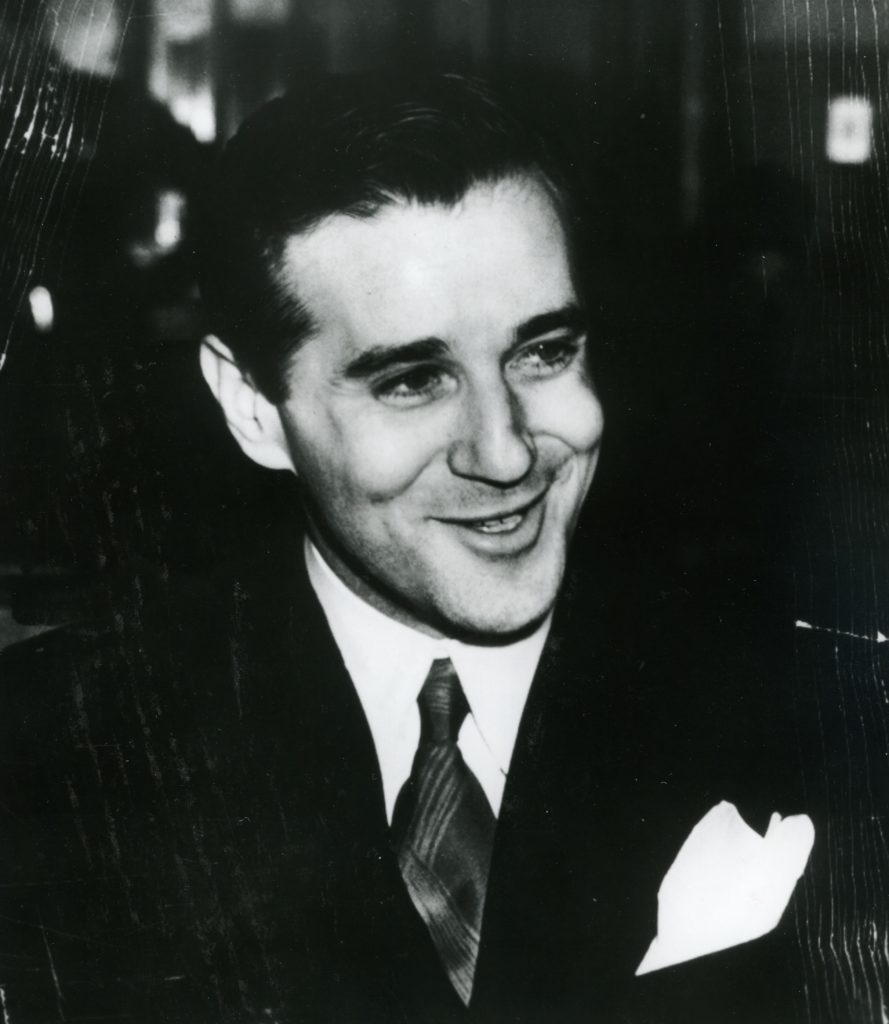
It happened on the night of June 20, 1947, inside the house at 810 N. Linden Drive in Beverly Hills, rented two months earlier by Siegel’s girlfriend, Virginia Hill. Ten days remained on the lease. Hill’s brother, Charles “Chick” Hill, was upstairs with his fiancé, Jerri Mason, pulling up a rug for an intended move to Virginia’s house in Florida. Siegel, 41, who was spending most of his time in Las Vegas running the Flamingo Hotel, had been staying at Hill’s house during business trips to L.A. On this trip he intended to take a vacation with his two daughters.
About 10:45 p.m., someone fired nine bullets from a .30-caliber M1 carbine (standard issue for U.S. Army troops in World War II) at Siegel. The victim expired instantly from two gunshot wounds to the head. He lay dead with a look of bland acceptance on his bloodied face.
The assassin had to have acted quickly. Siegel, his frequent sidekick Allen Smiley, Chic Hill and Jerri Mason had dinner at Santa Monica’s Ocean Park and had arrived at the house only minutes earlier. Maybe the shooter and getaway driver tailed them from the restaurant, or waited hours in a car outside the house for them to show.
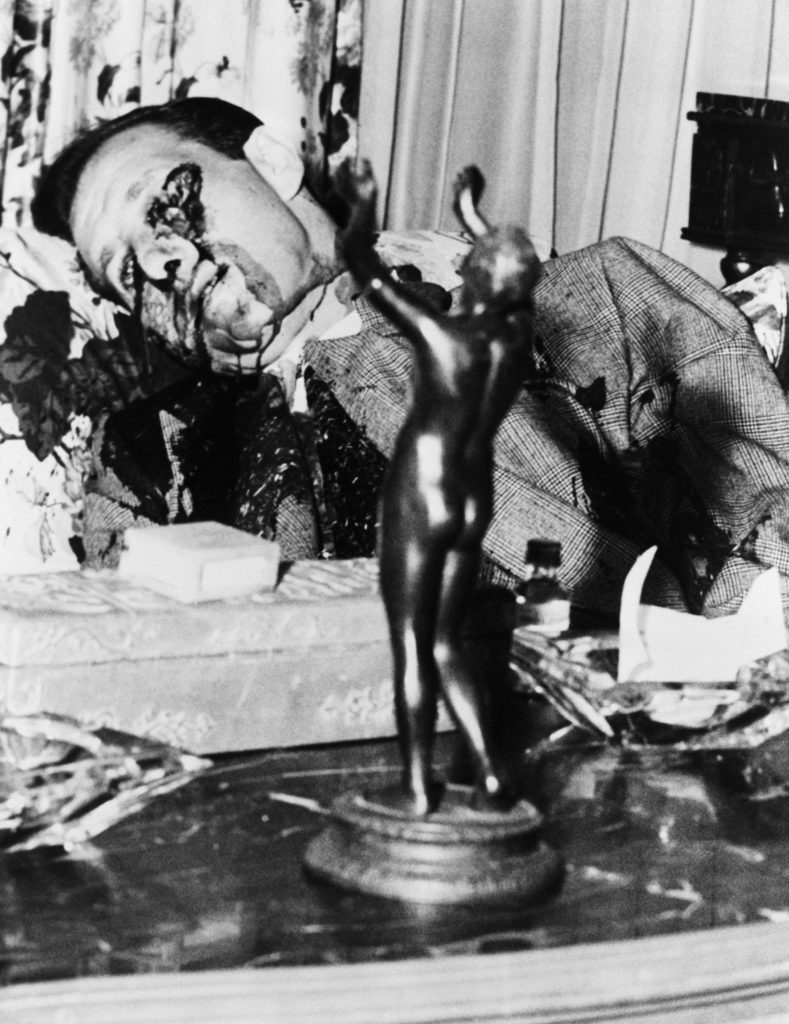
Local police suggested the shooter must have crept into the arched porte-cochere in the driveway of the neighboring house, at 808 N. Linden. Standing beneath the porte-cochere, the assassin spotted Siegel through the far right window, rested the rifle muzzle on a latticework trellis and fired through the glass. Cops found nine .30-caliber shells in the neighbor’s driveway. A witness reported seeing an auto speed toward Sunset Boulevard after the shots.
One intriguing part of the puzzle is that Siegel sat like a sitting duck on a couch, his body facing the window with the curtains conveniently parted just so — leaving a nice view for the shooter. Was it a coincidence? Did someone draw the curtains to aid the assassin?
The list of suspects in Siegel’s death is lengthy. He racked up enormous debts to his East Coast gangster partners to get the Flamingo Hotel in Las Vegas just right. He drove up the hotel’s cost to more than $6 million ($72 million in current dollars). The Los Angeles District Attorney’s office reported that Siegel’s personal debts totaled $1.5 million ($18 million today), and the gangster told a friend that if he could not cover it, he would have to “hide out somewhere. But I wouldn’t know where to hide.”
Bookmakers, including Los Angeles Mafia boss Jack Dragna, were angry over the excessive fees Siegel charged for his Trans-America race wire. A U.S. narcotics official on June 27, 1947, claimed Charles “Lucky” Luciano wanted Siegel dead in a row over dominance in international drug peddling. Siegel also allegedly had a piece of an interstate jewelry theft ring. Speculation has centered on Chick Hill, who may have sought retribution for Siegel’s physical abuse of his sister.
Surely, a number of people knew who killed Siegel. But they kept the secret, and died with it. Police speculated one of them was L.A. hoodlum Tony Trombino, one of the “Two Tonys” shot dead in Hollywood with Tony Brancato by Jimmy “The Weasel” Fratianno, in 1951. Still, the person who fired that M1 carbine may never be known.
Where are Lansky’s millions?
Six years after the death of Meyer Lansky, his eldest son, Buddy Lansky, a lifelong victim of cerebral palsy, lived virtually penniless in a county government nursing home in Miami, at the age of 59. His father left unfulfilled a dying promise to arrange for Buddy’s care after he was gone.
For many years leading to his death at age 80 from lung cancer on January 15, 1983, Meyer Lansky was commonly known as the “accountant” and master business adviser for the national crime syndicate. He was a boyhood friend in New York’s impoverished Lower East Side of fellow Mob legends Charles Luciano and Benjamin Siegel. And, thanks to his genius as an investor and racketeer, the narrative went that he must be very rich, with a net worth of as much as $300 million.
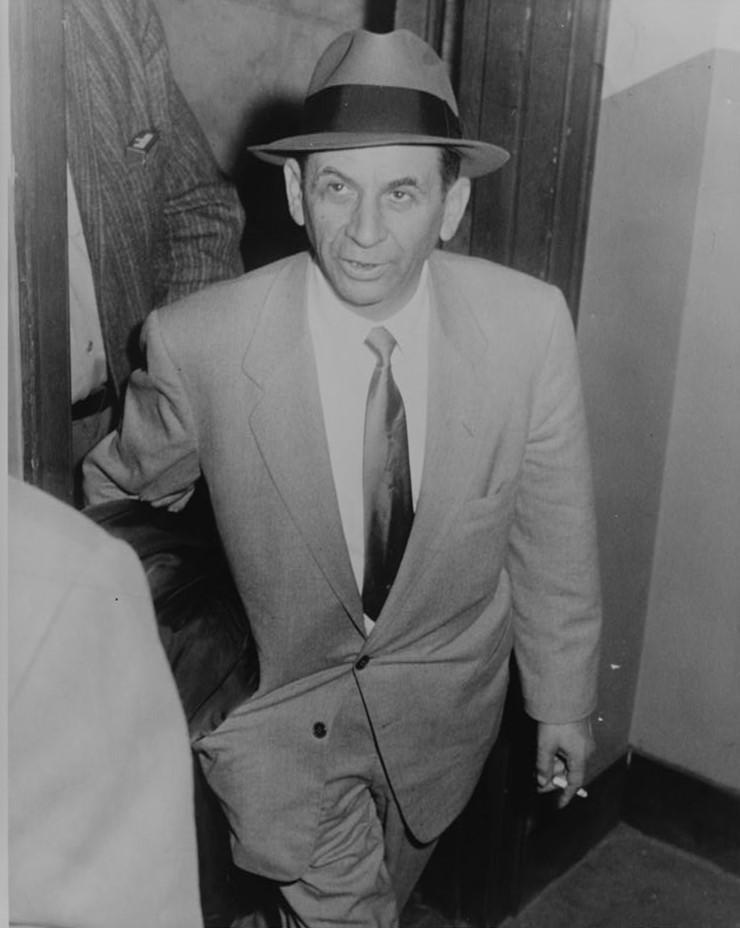
However, there is no evidence that Lansky ever held such a sum. In 1989, Buddy barely missed eviction after trustees for Lansky’s estate could not even meet the $3,000 owed for his medical care. When Meyer died, the personal assets he had left came to $58,401.67. So little did he have that his own hospital bills at his death totaled $16,375.60, of which the federal Medicare program covered $15,150.62.
Lansky’s second wife, Thelma “Teddy” Lansky, found absurd the notion that the “Little Man” who strode with the giants of American organized crime for decades was worth $300 million, as some U.S. law enforcement officials somehow estimated. In an interview with the CBS show 60 Minutes in 1989, Teddy described the $300 million claim as “preposterous and ridiculous.”
So what happened to Meyer’s supposed fortune? How about his years as a leading stakeholder in casinos in Cuba?
Lansky participated in gambling rackets with a gang that featured Luciano, Siegel and Frank Costello after World War I. During Prohibition, they were successful bootleggers. Lansky co-ran the violent Bugs and Meyer Mob, with Siegel. After Prohibition, they dabbled in drug trafficking and fine furs. From the late 1930s to the 1960s, Lansky invested in hotels and gambling clubs in Cuba, Las Vegas, the Bahamas, and in jukeboxes in New York.
In the 1950s, while a hidden investor, Meyer had his brother Jake front for him for a time at the Thunderbird hotel-casino in Las Vegas. In 1960, he asked for and got a $200,000 “finder’s fee” for inducing some of his Miami hotel owner friends to the buy the Flamingo in Las Vegas. In 1971, the feds charged Meyer with conspiring with the Miami group to secretly skim $36 million from the Flamingo from 1960 to 1968. A judge dropped criminal charges against him, citing Lansky’s poor health. Two other defendants served brief terms in federal prison.
What’s true is that many of Lansky’s best investments over the years went sour. In Havana, he operated the Montmartre Club, the famed Nacional Hotel and then spent up to $18 million building his Havana Riviera hotel-casino. He opened the Riviera in December 1957 only to see it all collapse as Fidel Castro’s revolution seized American-owned property. The upheaval in Cuba came at the peak of Lansky’s success, and wrecked him. He also lost his large casino investments in Freeport in the Bahamas in the 1960s when a government bribery scandal led to the end of his businesses there.
What happened to Lansky’s purported hundreds of millions? The answer is that he probably did not amass that kind of money, and lost the fortune he did have. Maybe the figure referred to the value of his holdings over a lifetime, made and spent. However, the so-called “$300 million” fortune squirreled away in Swiss bank accounts was nothing more than a legend.
Who killed Arnold Rothstein?
About 10 p.m. on November 4, 1928, Broadway gambler, racketeer and narcotics smuggler Arnold Rothstein sat as usual at his table at Lindy’s restaurant in midtown Manhattan. A waiter told him he had a phone call. After hanging up, Rothstein is said to have muttered something about having to meet “George McManus.”
Though no one saw him enter, Rothstein went into the Park Central hotel several blocks away on 7th Avenue. He walked into Room 349. About 10:45 p.m., a hotel guest in the corridor heard a loud commotion and noticed a stricken man — Rothstein — emerge from the guest room, clutching his abdomen. The man took the stairs to a first-floor service entrance. He told a janitor he’d been shot and needed a doctor.
A police detective asked Rothstein who shot him. “I won’t tell you,” the cop reported him saying. When the detective persisted, Rothstein replied, “Please don’t ask me any more questions.”
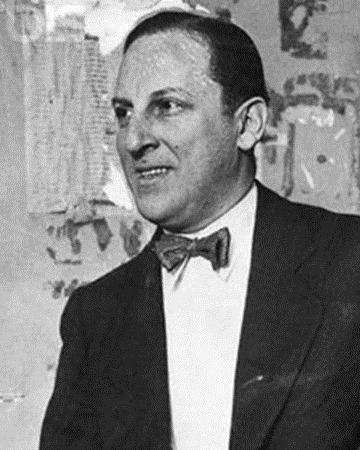
Rothstein suffered a wound from a single, .38-caliber pistol shot. The slug punctured his bladder and intestines. He continued to refuse telling police who did it, at one point placing his index finger to his smiling lips. Despite blood transfusions, he died two days later. His would be one of 25 unsolved murders in New York that year.
It was a strange but not entirely surprising end to the city’s most legendary and well-connected gambler, the brilliant man known in the underworld as “the Brain,” whose private, high-stakes dice and poker games attracted the wealthy and politically influential. He invested in drug trafficking, bootlegging, speakeasies, loansharking, illegal gambling clubs, real estate and bail bond businesses. He was a rich (estimated worth of about $17 million) fixer who demeaned his debtors and sometimes failed to honor his debts.
His killer got away with it (no thanks to the victim) and remains unidentified today. It took prosecutors about a year to bring prime suspect George “Humpy” McManus to trial in Rothstein’s murder. They claimed McManus, a friend of the victim, fired the shot believing Rothstein had failed to pay what he lost during a marathon poker game back on September 28.
McManus insisted Rothstein had scooped up the $51,000 in cash McManus had lost and left IOUs for the more than $200,000 owed to other players, including San Francisco card sharp Nate Raymond. The stud card game came down to Raymond and Rothstein. Finally, in the high spade card side game, with $50,000 at stake, Raymond drew the ace of spades. A frustrated Rothstein said he needed a day or two to raise what he owed. Raymond, at the murder trial, said the game was on the level and that Rothstein intended “to chisel” him out of $219,000.
When Raymond phoned days later to collect, he said that Rothstein exclaimed: “Crooked! I won’t pay.” Later, McManus arranged a meeting with the game’s creditors at the Park Central for Rothstein to settle it up.
An investigation found that McManus had not only booked the hotel room, he left inside it an overcoat with his name on it. He admitted to reserving it but not to being present when Rothstein came by.
At McManus’s trial, the district attorney’s office made the case for motive — that when Rothstein lost $219,000 to Raymond, he left paper IOUs for his losses and took the $51,000 McManus lost for himself, and McManus resented it.
But prosecutors and New York Police had a terrible time making their case. An officer lost Rothstein’s bloodstained clothing. The D.A. could not even prove McManus was in the room at the same time as Rothstein. The judge, citing insufficient evidence, ordered McManus acquitted.
Rothstein’s death had many ramifications in New York. The city’s police commissioner and district attorney soon resigned. Documents in Rothstein’s office showed his complicity in an international drug syndicate and proof of his involvement in the infamous theft of $5 million in Wall Street bonds with fellow fraudster Nicky Arnstein.
Ultimately, Rothstein’s own character flaws caught up to him. As one man told the United Press in November 1928: “He loved to collect and he hated to pay — so he died.”
Rothstein knew who shot him, but his apparent devotion to underworld ethics kept the truth from coming out before he died. No one ever fessed up either. After more than 90 years, this is another Mob murder that may never be solved.
Who killed Sam Giancana?
For Salvatore “Sam” Giancana, June 19, 1975, served as the end of a fateful year. The previous July, Giancana had returned after an eight-year exile in Mexico, following the end of his 10-year reign as the gangland chief of Chicago in 1966. Mexican officials forced him out of bed and delivered him to the feds at the border. The government subpoenaed him to testify in November 1974 in Chicago in the first of four appearances before a federal grand jury.
In May 1975, at age 67, Sam saw a surgeon in Houston for removal of his gall bladder. Meanwhile, the U.S. grand jury wanted him back, and the staff of the U.S. Senate Select Committee on Intelligence investigating the CIA’s alleged attempts in the early 1960s to assassinate Cuban leader Fidel Castro — using Giancana as the agency’s clandestine adviser — prepared to contact him about testifying.
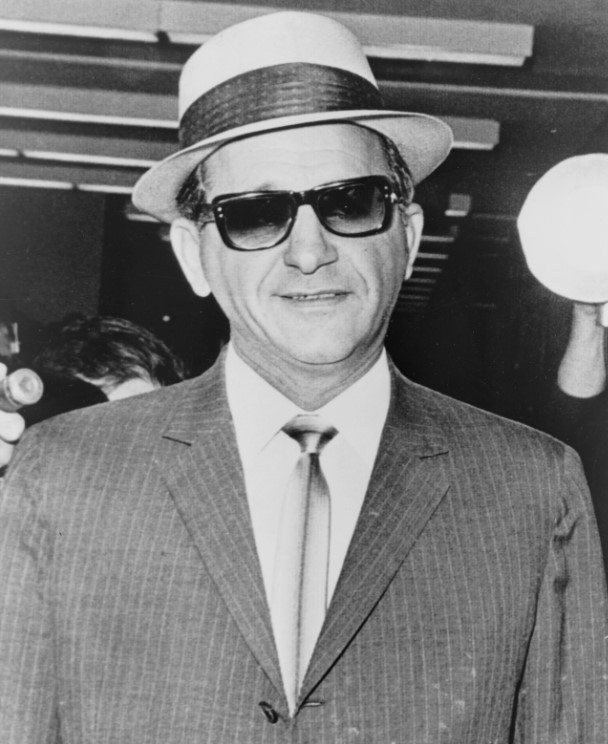
That Thursday, June 19, as police and FBI agents watched outside, Giancana held a “welcome back” party to celebrate his return from Houston. Friends, relatives and mobsters came by his home in the suburb of Oak Park. The party lasted into the night. Some reports claim the police and agents left when it got late.
After 11 p.m., Giancana told his live-in caregiver, Joseph DiPersio, that he didn’t need him for the evening. Giancana went to his basement kitchen and started to heat a frying pan to make a snack of sausage and spinach, maybe to share with the person still with him. Immediately, someone drew a .22-caliber automatic pistol, with a suppressor, and shot him six times, into the neck and head, including once in the mouth.
Investigators surmised that Giancana must have known and trusted the shooter. The assassin conveniently fled the house without any witnesses. DiPersio and his wife said they heard no shots. The caretaker found the victim lying face up in a pool of blood. He placed an emergency call at 11:53 p.m. The sausages in the pan were hardly even cooked yet.
In August, landscapers came upon a High Standard .22-caliber Duramatic automatic pistol in the nearby River Forest area, where Chicago Outfit leaders Tony Accardo and Charles English lived, less than two miles from Giancana’s place. The gun had a shortened barrel with 42 holes drilled into it to make the silencer work better. Illinois State Police soon confirmed it as the murder weapon.
Some authorities believed the motive for the obvious Mob hit centered on information Sam provided to the feds, and his possible return before the federal grand jury. His murder may have been a message to would-be squealers in general, as was the shot to his mouth.
But Peter Vaira, then head of the U.S. Organized Crime Strike Force in Chicago, said he did not believe the motive was to silence Giancana. Giancana’s testimony provided so little substance that the Justice Department was thinking of charging him with perjury, he said.
“It looks like a private thing, like he’s done something to somebody,” Vaira told the Los Angeles Times. “I don’t think it’s because of his grand jury testimony.”
Two weeks before his death, Giancana took a meeting with Chicago Outfit leaders Accardo and Joseph Aiuppa about his grand jury statements. Any hit on Giancana must have been okayed by the boss, Accardo, who did not show up for Sam’s welcome party.
Rumors swirled that the shooter may have been Tony Spilotro, the 37-year-old Outfit representative in Las Vegas. Federal and Chicago authorities thought it was Giancana friend and Mob crony Dominic Blasi, who parked his car outside during Sam’s party.
But without sufficient evidence against Spilotro or Blasi, nothing materialized. Thus, the identity of Giancana’s killer remains unknown, as least publicly.
Feedback or questions? Email blog@themobmuseum.org





